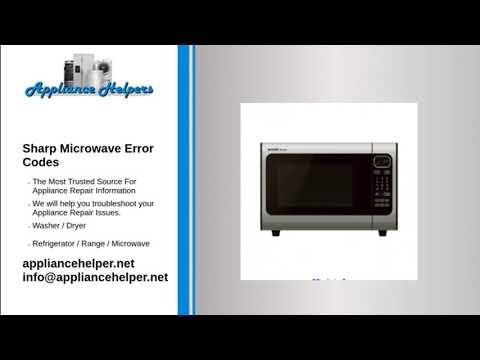
As a microwave beginner, seeing an error code pop up can be daunting. You might even imagine that your microwave is speaking in some sort of secret code! But fear not. Dealing with these issues is often simpler than it seems, especially with the right guidance. The UE error is basically your microwave’s way of signaling that it needs some attention, much like how your car might flash a warning light on the dashboard. While some fixes can be managed on your own, others might just require a bit of professional help. Let’s dive into understanding when exactly you should make that call to a technician.
Understanding the UE Error Code
You might be wondering, what exactly happens inside your microwave when the UE error code appears? Think of it this way: your Sharp microwave’s turntable is like a merry-go-round, and the UE error occurs when this merry-go-round isn’t spinning like it should. This disruption can result from a few issues, such as an obstruction in the turntable path or a malfunctioning motor.
Imagine your favorite record player skipping tracks because the record isn’t sitting right. Similarly, if there’s an obstruction—like a piece of food residue or a foreign object—this can cause the UE error to light up. Alternatively, if the motor responsible for the smooth turning action decides to take a break or malfunction, you’ll see the same error code.
Understanding these causes gives you the first insight into whether this is something you can fix yourself or whether it’s time to call in the experts. With this knowledge, you can proceed with more confidence, identifying if a quick clean or adjustment is all that’s needed or if it’s something more technical that requires specialized skills.
Trying a Few DIY Fixes
Before calling a technician, you might want to try a couple of simple solutions that could potentially clear up the issue. Here’s the deal: sometimes the solution is as easy as cleaning the turntable area. If you’re comfortable doing so, unplug your microwave and carefully inspect the rotating parts. Look for any debris or food particles that could be blocking the turntable and causing the error code to display.
Another thing to consider is whether the turntable is properly aligned. Just like a wobbly table leg needs a slight adjustment, ensure that the turntable is sitting correctly on the spindle. Sometimes, if you’ve recently moved or cleaned the unit, it might not have been placed back properly. Place everything back, plug it in, and see if that clears the error.
If you’re still seeing the UE error despite these efforts, don’t worry. It might be a sign that the motor needs a more skilled set of hands to take a look. Keep in mind that while DIY fixes can be helpful for minor issues, there’s no harm in reaching out for professional guidance when needed.
When to Call a Technician
So, at what point should you decide it’s time to call in the professionals? If you’ve tried the easy fixes and the UE code still stubbornly persists or if your microwave isn’t functioning properly in other ways, then it’s probably time for a technician. You wouldn’t want to ignore an annoying squeak in your car engine, and the same applies here. Persistent problems indicate deeper issues that need expert attention.
A technician has the right tools and expertise to diagnose and repair more complex faults, such as a faulty motor or electronic board issues. They’ll be able to test parts safely and make replacements if necessary, ensuring your microwave returns to its optimal condition without any additional damage.
At the end of the day, calling a professional might just save you from the hassle of a more serious breakdown in the future. It’s always wise to err on the side of caution, especially if the DIY route doesn’t yield results.
Preventive Tips to Keep Your Microwave Running Smoothly
Now that you know what the UE error code is all about and how to tackle it, let’s prevent it from rearing its head again. The key to smooth microwave operation is regular maintenance, much like how you’d periodically service your car to keep it running smoothly.
Regularly wiping down the interior of your microwave, especially the turntable and the wheels underneath, can prevent food buildup that might cause blockages or imbalance. Make sure when loading food, it doesn’t exceed the weight limit of the turntable, as this can strain the motor unnecessarily.
Moreover, always ensure that the dish you’re using fits well and doesn’t disrupt the rotation. Using a plate that’s too big can be like trying to wear shoes that are too tight—they simply don’t work well together and can exacerbate issues.
By keeping these tips in mind, you can enjoy the convenience of your microwave without the interruption of pesky error codes. Remember, being proactive with maintenance can save you from reactive headaches down the line.